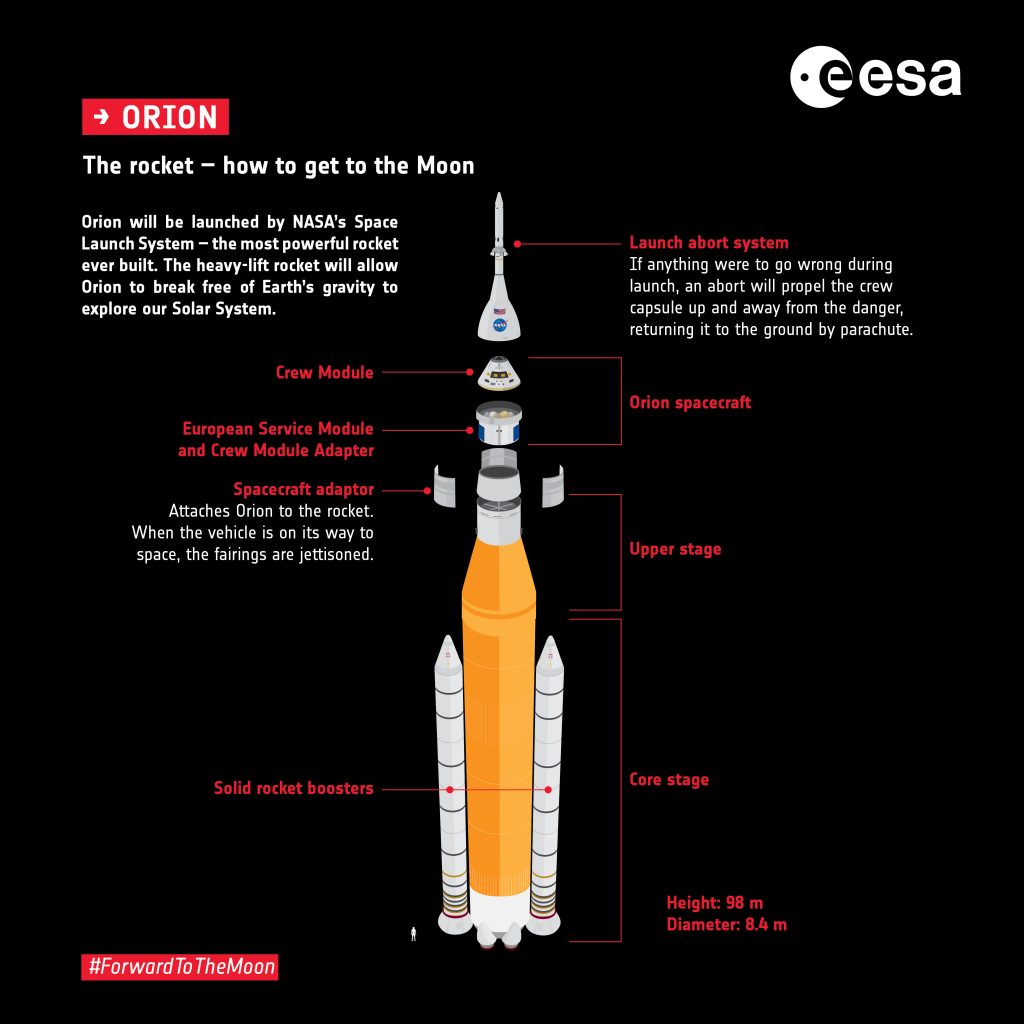The rocket that will propel the Orion exploration spacecraft powered by the European Service Module, passed an important test yesterday, bringing humankind one step closer forward to the Moon. The largest rocket element NASA has ever built, the core stage of NASA’s Space Launch System (SLS) rocket, fired its four RS-25 engines for 8 minutes and 19 seconds at NASA’s Stennis Space Center in Mississippi, USA.
The successful test, known as a hot fire, is a critical milestone ahead of the Artemis I mission, which will send an uncrewed Orion spacecraft on a test flight around the Moon and back to Earth, paving the way for future Artemis missions with astronauts.
Engineers designed the eight-part Green Run test campaign to gradually bring the SLS core stage to life for the first time, culminating with the hot fire. The team will use data from the tests to validate the core stage design for flight.

“The SLS is the most powerful rocket NASA has ever built, and during today’s test the core stage of the rocket generated more than 1.6 million pounds of thrust within seven seconds. The SLS is an incredible feat of engineering and the only rocket capable of powering America’s next-generation missions that will place the first woman and the next man on the Moon,” said acting NASA Administrator Steve Jurczyk. “Today’s successful hot fire test of the core stage for the SLS is an important milestone in NASA’s goal to return humans to the lunar surface – and beyond.”
During the hot fire test, the stage fired the engines for a little more than eight minutes, just like it will during every Artemis launch to the Moon. The longer duration hot fire tested a variety of operational conditions, including moving the four engines in specific patterns to direct thrust and powering the engines up to 109% power, throttling down and back up, as they will during flight.
“This is great news for humankind as we power up for the Artemis I mission,” says ESA’s director of Human and robotic exploration David Parker. “The team behind the European Service Modules congratulates NASA on this impressive test. We are looking forward to integrate the completed Orion spacecraft including the European hardware and support the first Artemis launch around the Moon.”

“This longer hot fire test provided the wealth of data we needed to ensure the SLS core stage can power every SLS rocket successfully,” said John Honeycutt, manager for the SLS Program at NASA’s Marshall Space Flight Center in Huntsville, Alabama. “During this test, the team conducted new operations with the core stage for the first time, repeated some critical operations, and recorded test data that will help us verify the core stage is ready for the first and future SLS flights for NASA’s Artemis program.”
Test teams at Stennis supervised a network of 114 tanker trucks and six propellant barges that provided liquid propellant through the B-2 Test Stand to the core stage. Test teams also delivered operational electrical power, supplied over a million litres of water per minute to the stand’s flame deflector, and monitored structural interfaces of both the hardware and the stand.
Next, the core stage for SLS will be refurbished, then shipped to NASA’s Kennedy Space Center in Florida, USA. There, the core stage will be assembled with the solid rocket boosters and other parts of the rocket and NASA’s Orion spacecraft including the European Service Module on the mobile launcher inside the Vehicle Assembly Building at Kennedy in preparation for Artemis I.

 Automated Transfer Vehicle page
Automated Transfer Vehicle page ATV blog archive
ATV blog archive
Discussion: no comments